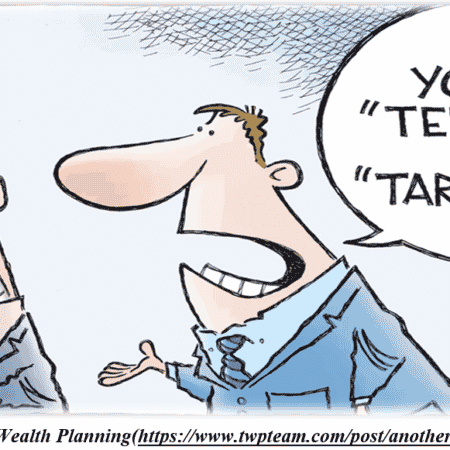
Pakistan Institute of Development Economics
- Home
Our Portals
MenuMenuMenuMenuMenuMenuMenu - ResearchMenuMenuMenuMenuMenuMenuMenu
- Discourse
- The PDR
- Our Researchers
- Academics
- Degree Verification
- Thesis Portal
- Our Portals

The Challenges of Pakistan’s National Tariff Policy
Need for Tariffs
The objectives of import tariffs are twofold. First is revenue generation and second is protection of domestic industry from foreign competition and foreign dumping practice. Hence, import tariff can be used for tax collection and boosting domestic industrial growth, affecting county’s competitiveness and trade balance.
Therefore, the tariff policy must be devised very carefully for a country. Unfortunately, this policy has never been efficiently formulated and implemented in Pakistan[1]. Partly because previously, the charge of imposing import taxes was in the hands of the Federal Board of Revenue (FBR). And the FBR had used taxes as an instrument of revenue generation, causing inconsistencies for the business communities and industrialists.
Economic disincentives for private sectors are also due to faulty laws that apply to the process of imposing tariffs. For example, the law related to taxes for businesses, in layman language, means that everything needs to be taxed 100% except for things exempted by FBR. Hence, it gives executive power to FBR for taxing businesses and empowers bureaucrats to change these rates as they desire. One can imagine how much uncertainty this can and has been creating for all businesses within Pakistan.
Pakistan’s Tariff History Recap
Further, Pakistan’s tariff history shows excessive reliance on import tariff revenues amounting close to 50% (Table 1). Further if one makes a comparison of Pakistan with other countries, one finds a declining trend of Pakistan in world trade (-23%) as opposed to increasing trend for other countries like China and India (Table 2; Table 3). Looking deeply into dynamics has revealed that the loss of Pakistan’s competitiveness in trade overtime has its roots in high import tariffs. Not only one finds an average weighted tariff within Pakistan to be higher than its competitors, but exports being affected negatively in periods of high tariff (Figure 1; Table 2).

How import tariff has important implication for exports can be understood from patterns in Figure 1 and Table 3. It is evident that periods of high tariff within Pakistan led to export reduction and low import taxes promoted exports. In this context, a reduction in taxes can be observed from patterns in figure 1. Through first decade of 2000s, government reduced trade taxes from 23.1% in 1999-2000 to 8.9% in 2014. This had led to gains in exports by 173% (Figure 1). However, this reduction was not consistent and until 2019, the tariffs increased to 11.6%, declining the exports to 9.1%.



High Import Tariffs
One consequence of high import tariffs within Pakistan is creating anti-export bias by making domestic markets more profitable than exports. This has made Pakistan’s import substitution industry uncompetitive in domestic market and restricted it to remain net importer of goods. Thus, they import rather than developing industrial base through technological transfers and innovation to cater future domestic and international demand. This is how high level of protection through tariffs has manipulated Pakistan’s economic structure. This is quite obvious from its low position in global competitive index rankings (Table 2).

The national tariff policy, formulated and announced by the National Tariff Commission has tried to correct these policy inefficiencies (Table 4; PIDE Policy Viewpoint No. 14:2020). Therefore, in this policy import tariffs are identified as a critical instrument of industrialization and trade only. In this context, this initiative represents an economic paradigm shift. First time, a policy is made to increase Pakistan’s export competitiveness through low price of input imports via tariff reduction.

Issues and Challenges
However, in our view, some specific issues need attention for sustainability of this policy shift. For instance, will this policy increase competitiveness of Pakistan’s industries globally? Secondly, how to deal with the loss of revenues by alternative instruments?
Main concern is effective implementation of time-bound protection which is provided to industries through duty-free access to imported raw materials. Besides this, another concern is that will this protection benefit the economy by enhancing competitiveness? This is a valid concern for Pakistan, given in past powerful lobbies have manipulated many policies in their interest. Hence, we cannot ignore the political economy aspect of this policy.
Conclusion
In our view, authorities should devise research base for impact evaluation to help National Tariff Commission in making informed decisions. Such assessments help in devising a mechanism for revisiting the policy stance for industries, particularly for industries which use this initiative for their profitability rather than to improve their competitiveness against global competitors.
Hence, emerging sectors should be provided strategic protection to boost the economy of country through tariff reduction on raw material. However, incentives should be given to encourage the industries to opt for methods of competitive production rather than seeking protection.
Some reports indicate that tariff policy might cause revenue loss of PKR 250 billion in FY 2021 and PKR 270-320 billion in FY 2022. The reason is that tariff will not be used as source of revenue generation (National Tariff Policy-the long haul, 2020). Hence for the sustainability of this policy stance and that this instrument does not go back into the hands of FBR again, it is crucial to identify and strengthen alternative revenue generation methods.
Besides the challenges, if the newly announced tariff policy is efficiently implemented it will be fruitful for Pakistan’s economy.
[1] For detailed analysis of Pakistan National Tariff Policy 2019-24 and also the history of tariffs in Pakistan, please refer to PIDE Policy Viewpoint 14:2020
Download full PDF


